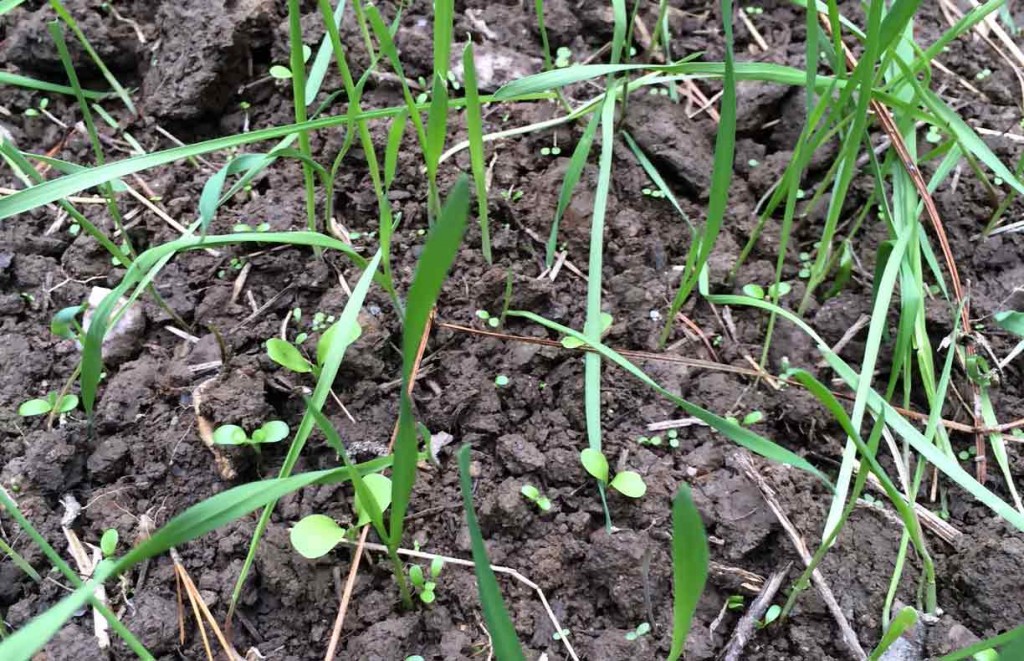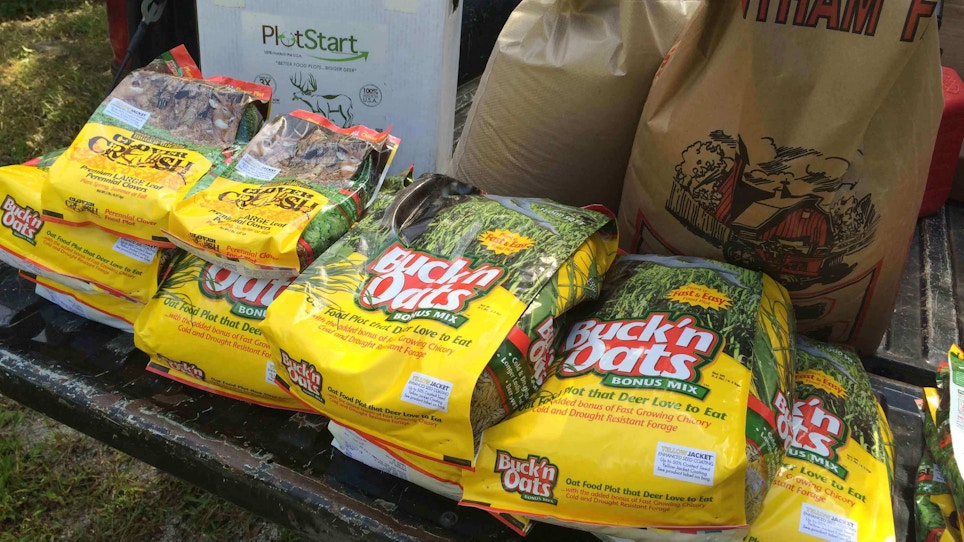Fall and winter food plots are typically planted for hunting purposes. They are designed and planted to attract and hold deer on your property and to lure them out during daylight hours. The only reason deer and wildlife are attracted to these plots is because they taste good and provide vital energy (carbohydrates) during the fall and winter when there isn’t a lot of browse available. However, if you aren’t giving your plots everything they require then the plants growing in them won’t contain the nutrient levels needed and won’t be as attractive to deer.
Test Your Soil
If you’ve studied up on food plots then you know the first thing you need to do is take soil samples from each plot and send them off to your county or state agricultural service for soil analysis. You only need the top few inches of dirt from five to 10 different spots all over your food plot for a soil test. Place each scoop of dirt in a clean bucket that hasn’t had any fertilizer, salts or other materials in it and thoroughly mix all your samples together. Then fill a Ziploc sandwich bag with the mixed dirt and label with a marker on the bag the plots it came from. Send this off to the nearby soil lab to find out how much fertilizer you’ll need for each plot. The test might also indicate that you need to adjust your pH with lime.
pH and Lime
Most food plot seeds grow best in a soil with a pH of 6.0 to 7.0. If your pH levels aren’t in this range then your plants won’t be able to efficiently take up the nutrients in the soil. Essentially you’ll be wasting expensive fertilizer because your plants can’t utilize it all. Many soils are in the acidic range, which means that they need lime to bring the pH closer to a neutral level. A soil test will tell you how much agricultural lime you need to bring your pH up. If you have nice flat fields with easy access then you can easily rent a lime buggy from your local co-op and spread the cost-effective agricultural lime or have a lime truck spread it for you. However, if you have hard-to-reach hunting plots like many of us do, then you’ll have to either spread more expensive pelletized lime (sold in 40-pound bags) or use something else.
Instead of lime I’m using a new product this season for our hard-to-reach plots. DeerGro makes a product called PlotStart. It's liquid calcium (which is the element in lime that the plant utilizes to take up fertilizer) and instead of taking months to change a soil’s pH, it reacts immediately and changes pH in days. One 2½-gallon jug has the calcium equivalent of 1 ton of agricultural lime. I used a Crop Care ATV sprayer to spray PlotStart on my plots and it took a fraction of the time and effort to treat my fields than it would to spread bagged lime — it’s cheaper, too. You can spray PlotStart before you disc your soil or on your seed after it’s been planted. PlotStart has beneficial microbes in it that actually act like a seed coating to help give your young plants a boost.
Seed Selection
After you address your lime and fertilizer needs it’s time to plant seeds. I typically like to plant a blend of forage oats, cereal rye and wheat. The forage oats that I’ve had a lot of success with over the years is Evolved Harvest Buck’n Oats. The deer on Borrowed Acres have absolutely hammered these oats over the last several years. These oats are cold tolerant and produce more tonnage of palatable green forage instead of the non-desirable stems. Deer are browsing animals and mixing in the other forage crops such as cereal rye (not rye grass) and wheat will set the table for an irresistible feast. We plant about 100 pounds plus of this mix per acre and this gives us thick, luscious plots.
We love to hunt turkeys at Borrowed Acres, and while the turkeys are in our plots all winter long feeding on the same forage as the deer, we also mix in about 18 pounds of clover per acre as well. Not only does this draw in the turkeys during the spring, but also it extends the productive life of our plots into the early summer months. Clover is a high-protein food and once the woods green up in the spring deer begin to switch from high-energy food like the Buck’n Oats to high-protein foods such as clover. Protein helps build body muscle, aid does in fawn development and helps bucks grow bigger antlers. The only maintenance we need to do to keep the clover growing lush is to mow our plots in late April and again in May and perhaps June.
Evolved Harvest makes an excellent clover blend called Clover Crush, which contains four red and white forage clovers. These seeds come pre-inoculated so that they will fix atmospheric nitrogen into the soil, which will help cut down on your fertilizer cost next year.
Plant Your Food Plots With The Firminator.

This closeup was taken a 9 days after The Firminator planted Evolved Harvest Buck’n Oats and Clover Crush food plot blends.






